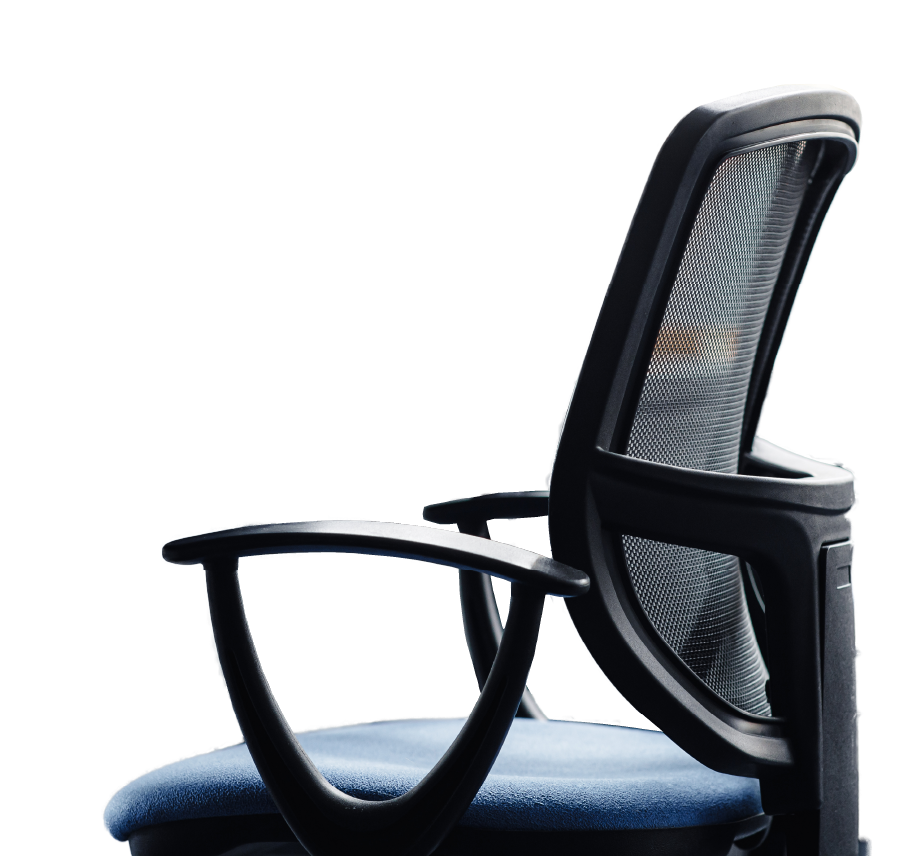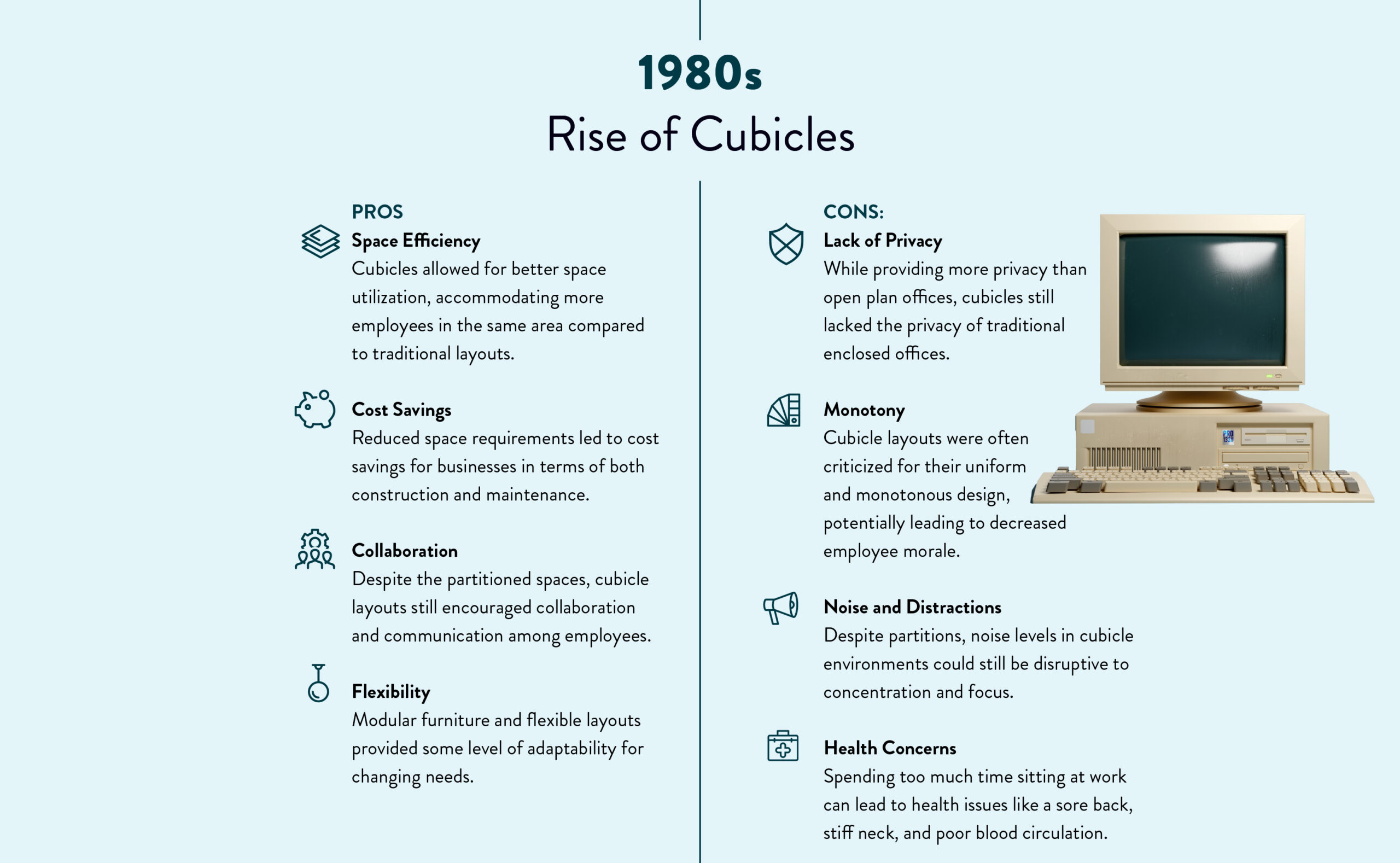INFOGRAPHIC
Step into any modern office today, and you’ll find a far cry from the iconic scenes of “Mad Men” with their smoke-filled rooms and rows of cubicles. The evolution of office space design has taken us on a remarkable journey, from closed-door executive suites to open-plan, tech-enabled workspaces. But how has this outward transformation shaped society’s work environment and business operations? In this resource, we delve into how the design of our work environment influences productivity, creativity, and employee well-being.
The physical workspace of an organization has a direct impact on the productivity and overall well-being of employees. Additionally, it is essential in molding the company culture and branding. Therefore, it is necessary to design and manage the office space strategically in a way that aligns with the goals and objectives of the organization. The physical environment can reflect and reinforce an organization’s values, mission, and identity.
Office design can be a powerful tool for attracting and retaining talent. A well-designed and aesthetically pleasing office space can create a positive impression on job candidates and make them more likely to accept a job offer. Moreover, it can also contribute to employee satisfaction and engagement, leading to higher retention rates.
How an office is designed can significantly impact how much work gets done, how long employees can focus in a single period, how many new ideas are generated, and how happy employees are with their jobs. A well-designed office space can enhance employee well-being, engagement, and performance. While industry and role needs may vary, factors such as lighting, temperature, acoustics, and ergonomics can significantly impact employees’ physical and mental well-being.
Ergonomics, the design concept surrounding employee safety, efficiency, and comfort, is a critical aspect of interior, furniture, and office design. While the concept and goal have been consistent over the decades, its execution has evolved with the eras and is continually being revised by specialists today. Comfortable and supportive furniture, adjustable desks and chairs, and proper positioning of computer monitors can help prevent musculoskeletal disorders and promote good posture. Investing in ergonomically designed office furniture and equipping employees with the appropriate tools and equipment that promote comfort and support can significantly enhance their productivity, reduce injuries, and improve their overall health and well-being. Providing such technical and ergonomic solutions can help organizations create a safer, more efficient, and more productive work environment, leading to greater job satisfaction and employee retention.
The need for an office has always been spurred by creating efficient workers, providing a center for communication between employees, and effectively managing the plan, processes, and procedures for your brand’s products and services. While the concept of “why?” has remained consistent, “how?” has been an ongoing conversation in which each decade of experts has unique recommendations that lead to significant changes across dozens of industries. Let’s look at the office’s major eras and how workplace trends have adapted to each generation of workers’ needs

Starting in the 1950s and transitioning to the 1960s, marked a shift in office design towards modernity and efficiency. Offices began to embrace more streamlined layouts and early technological advancements, laying the groundwork for future innovations in workspace design.
The 1960s to the 1970s witnessed the gradual introduction of open-plan offices, reflecting a departure from traditional enclosed layouts. This shift aimed to promote collaboration and adaptability within workplace environments, setting the stage for further experimentation with office design in the coming decades.
The transition from the 1970s to the 1980s saw the rise of cubicle-based office layouts, emphasizing space efficiency and cost savings. This period marked a shift towards more partitioned workspaces, introducing new challenges around privacy and workplace culture

From the 1980s to the 1990s, this period witnessed the continued evolution of office design, with a growing emphasis on open-plan layouts and flexibility. Advances in technology integration and ergonomic considerations further shaped office environments, fostering a balance between collaboration and individual productivity.
Transitioning from the 1990s to the 2000s marked a significant shift towards remote work options and the emergence of co-working spaces, driven by advancements in communication technology and changing work cultures. This period saw a growing recognition of the benefits of flexibility and collaboration beyond traditional office settings, paving the way for a new era in commercial real estate.
From the 2000s to the 2010s, remote work and co-working spaces became increasingly mainstream, emphasizing flexibility and work-life balance. Technological advancements and changing attitudes towards traditional office setups shifted how businesses approached workspace design and employee engagement.

The widespread adoption of hybrid work models has characterized the 2010s through 2020. This period has seen an increased focus on creating flexible and adaptable office spaces to accommodate modern workers’ evolving needs and preferences, emphasizing a balance between in-person collaboration and remote connectivity.

Finally, the transition from the 2020s to today has been marked by a gradual return to the office and a shift towards increased time spent in physical workplace environments. This transition reflects a balance between the benefits of in-person collaboration, company culture, and productivity, alongside ongoing considerations for health and safety, commuting challenges, and the evolving expectations of modern workforces.

CONCLUSION
Adapting to the Changing Needs of the Modern Workforce
Today, we’ve found there’s no one-size-fits-all model for how your business operates its workplace. For some companies, it makes sense to have the traditional, private-office build-out; for others, a hybrid option may make more sense. Finances, client needs, work product sensitivity, execution ability, and continued technological advancements guide these decisions. Looking ahead, an emphasis on flexibility, collaboration, and employee well-being is poised to continue shaping office space’s future as organizations strive to create environments that foster innovation, productivity, and collaboration while reducing cost and risk. By understanding the history and impact of office space design, organizations can make informed decisions about their work environments and create spaces that inspire efficiency and satisfaction.
























